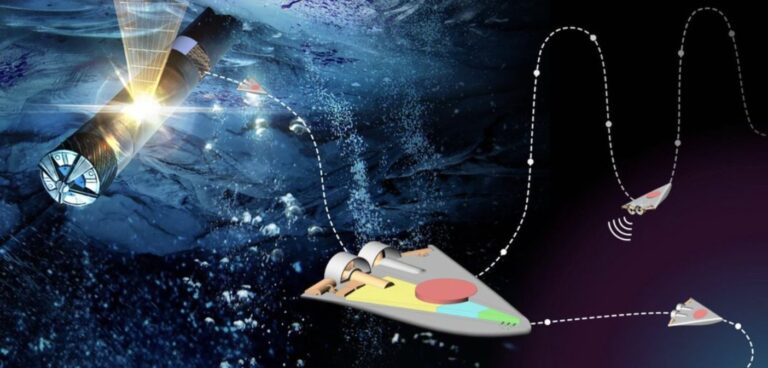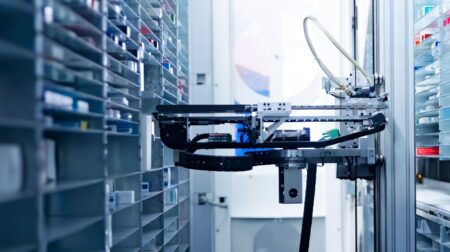NASA has contributed US$600,000 (£495,000) toward the development of a swarm of mobile phone-sized swimming robots designed to explore alien oceans for signs of life.
NASA’s Jet Propulsion Laboratory developed the Sensing With Independent Micro-Swimmers (SWIM) concept with the aim of exploring inhospitable planets and celestial bodies, like Jupiter’s moon Europa or Saturn’s moon Enceladus.
The idea is that the swarm would be packed inside a probe that could tunnel through the ice with its blazing-hot nuclear battery. The swarm would then be released underwater to explore the environment.
Once in the ocean, the battery’s heat should create a thermal bubble, gradually melting the ice above and potentially causing reactions that alter the water’s chemistry.
Ethan Schaler, the robotics mechanical engineer behind SWIM, said: “My idea is, where can we take miniaturised robotics and apply them in interesting new ways for exploring our solar system?
“With a swarm of small swimming robots, we are able to explore a much larger volume of ocean water and improve our measurements by having multiple robots collecting data in the same area.”
Not yet part of any mission, the initial SWIM concept suggests wedge-shaped robots, each about 12cm (five inches) long and about 60-75cm3 (three to five cubic inches) in volume.
Theoretically, about four dozen robots could fit in a 10cm (four-inch) section of a cryobot, which amounts to just 15% of the science payload volume.
This would leave room for more powerful but less mobile equipment that could gather data during the journey through the ice and provide stationary measurements in the ocean.
The probe would be connected via a communications tether to the lander on the surface, which would also serve as a point of contact with the Earth-based mission controllers.
The SWIM robots could move together in a behaviour inspired by fish or birds, producing overlapping data which reduces chances for error.
The group data could also show gradients: temperature or salinity, for example, increasing across the swarm’s collective sensors and pointing toward the source of any detected signals.
Each robot would have its own propulsion system, onboard computer and ultrasound communications system, along with simple sensors for temperature, salinity, acidity, and pressure.
Schaler explains that life can begin with these energy or chemical gradients. His Phase II study will reportedly include chemical sensors to search for biomarkers (signs of life).









